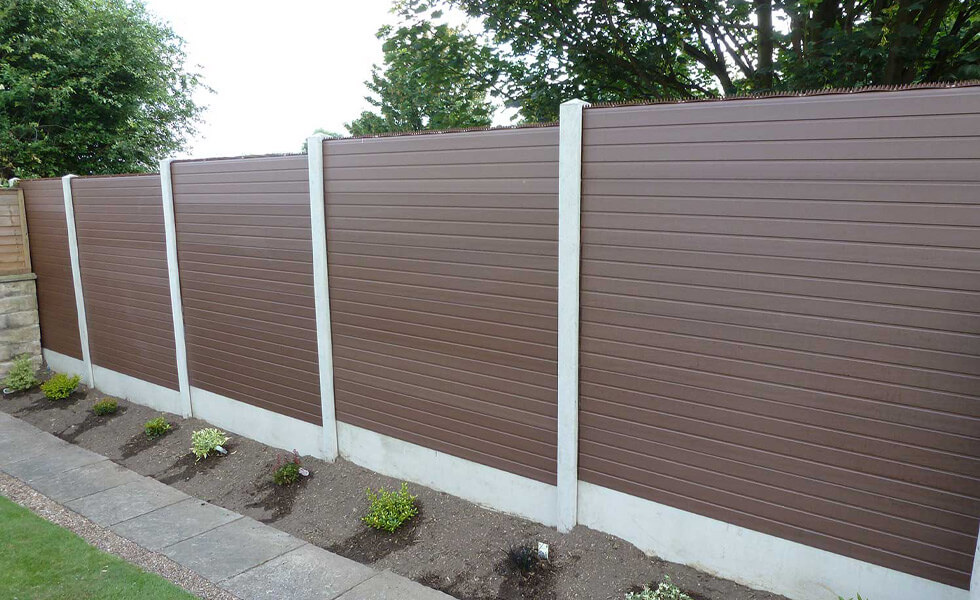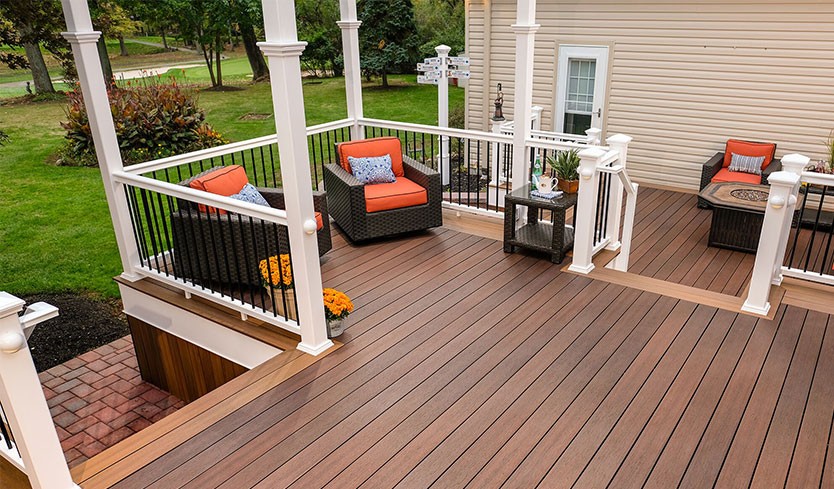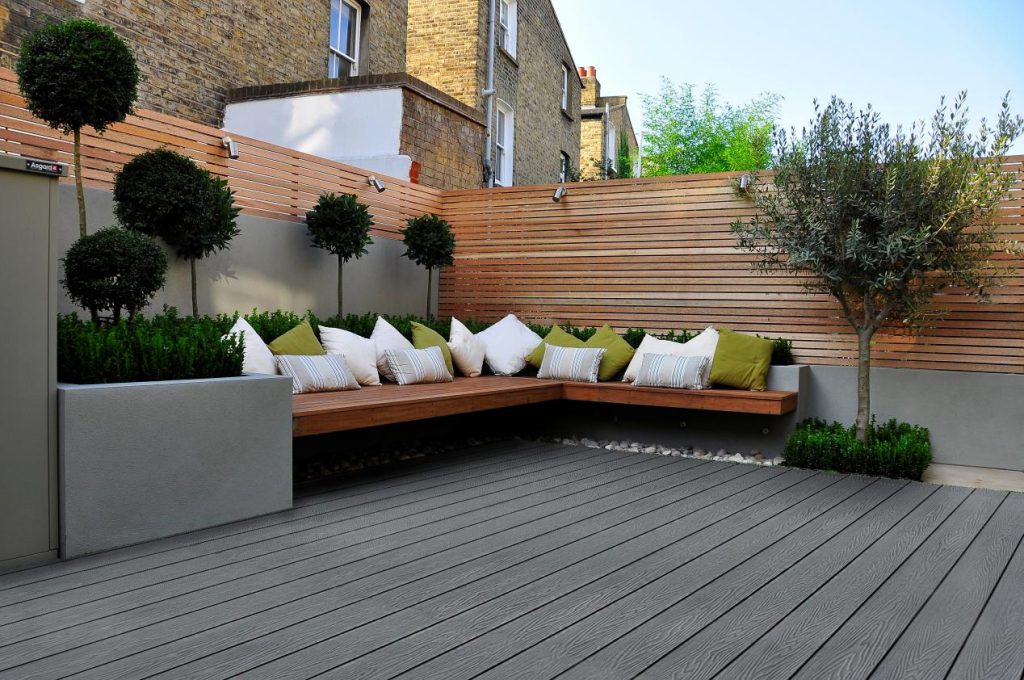When it comes to upgrading outdoor boundaries, composite fencing for concrete posts has become a practical and stylish solution for homeowners, property developers, and landscaping professionals. The combination of composite fence panels with concrete posts delivers unmatched strength, durability, and aesthetics—offering a long-term fencing system that stands up to time and weather. This article dives deep into the types and benefits of composite fencing for concrete posts, explaining why this pairing is now one of the most trusted options for contemporary garden and property fencing projects.
Table of Contents
Why Choose Composite Fencing with Concrete Posts?
While traditional wooden fences provide natural charm, they often struggle with moisture damage, warping, and maintenance demands. In contrast, composite fence panels for concrete posts offer the perfect balance of beauty and resilience. The structure blends the modern appearance of composite materials with the rock-solid reliability of concrete.
The result is a fence that is:
Structurally stable even in high winds
Resistant to rot, corrosion, and insect attack
Virtually maintenance-free
Environmentally sustainable
Available in diverse textures and colors
But beyond these general advantages, the real strength lies in understanding the types of composite fencing compatible with concrete posts and the specific benefits each configuration provides.

Types of Composite Fencing for Concrete Posts
There isn’t a one-size-fits-all model when it comes to composite fence panels concrete posts combinations. Depending on the design preferences, privacy needs, and site conditions, you can choose from several distinct types of fencing setups. Let’s explore the most common and practical types used in both residential and commercial landscapes.
2.1. Slotted Concrete Post System with Composite Boards
This is the most widely used setup for composite fencing for concrete posts. The slotted posts allow the boards to slide directly into the grooves, creating a seamless panel design without visible screws or nails.
Key Characteristics:
Panels are built from interlocking composite boards
Concrete posts are precast with vertical slots to fit the boards
No need for metal rails or brackets
Easy replacement of individual boards if damaged
Benefits:
Clean, modern appearance with hidden fixings
Quick and efficient installation process
Excellent privacy and noise reduction
Long service life with minimal maintenance
This system is especially popular for garden boundary fencing where a sleek, uniform look is desired.
2.2. Composite Fence Panels with Concrete Gravel Boards
Another versatile setup combines concrete gravel boards at the base and composite fence panels above. The gravel boards protect the composite from ground moisture while providing a strong base structure.
Key Characteristics:
Standard concrete posts and gravel boards form the foundation
Composite boards or panels are stacked above the gravel board
Ensures a moisture barrier between the ground and panels
Benefits:
Enhanced lifespan of the composite panels
Protection from soil contact, mold, and splashback
Balanced mix of durability and modern aesthetics
Ideal for sloped gardens or uneven terrain
This type of composite fencing for concrete posts is perfect for homeowners who value durability and want to minimize long-term maintenance.
2.3. Decorative Composite Panels with Concrete Posts
For those who want fencing to complement architectural style rather than just act as a barrier, decorative composite fence panels concrete posts make an excellent choice.
Key Characteristics:
Panels may include laser-cut or slatted designs
Can integrate with decorative concrete post caps or textured finishes
Ideal for use around patios, pools, or landscape features
Benefits:
Adds a sophisticated and high-end aesthetic
Can allow partial visibility or light transmission for semi-privacy
Wide range of colors and surface finishes to match modern exteriors
This type appeals most to landscape designers and homeowners looking to combine privacy with style.
2.4. Double-Sided Composite Fence Panels for Concrete Posts
Double-sided fencing systems use composite panels that look the same on both sides, offering a premium visual experience for both property owners and neighbors.
Key Characteristics:
Each side of the fence mirrors the other
Compatible with standard slotted or square concrete posts
Often uses interlocking composite tongue-and-groove boards
Benefits:
Uniform aesthetic appeal on both sides
Ideal for shared property boundaries
Reduces disputes about “good” and “bad” fence sides
This is a particularly desirable choice in residential developments or areas where aesthetic harmony matters.
2.5. Acoustic Composite Fencing Systems with Concrete Posts
For properties near busy roads or industrial zones, acoustic fencing made from dense composite panels for concrete posts is designed to block sound while maintaining style.
Key Characteristics:
Heavier, denser composite boards
Specialized acoustic insulation cores may be added
Concrete posts provide essential structural rigidity
Benefits:
Significantly reduces external noise levels
Maintains visual appeal and security
Perfect for urban environments or commercial perimeters
Acoustic composite fencing offers functional and lifestyle benefits, particularly in noise-sensitive environments.
2.6. Horizontal Composite Fencing for Concrete Posts
Horizontal designs have become a major trend in contemporary landscaping, offering a sleek and architectural appearance. This setup uses horizontal composite fence panels mounted between concrete posts, creating a visually elongated boundary that enhances the sense of space.
Key Characteristics:
Composite boards are installed horizontally between reinforced concrete posts
Often features narrow gaps or shadow lines for modern aesthetics
Compatible with hidden aluminum support rails for additional rigidity
Works well with textured or colored concrete posts
Benefits:
Delivers a stylish, modern architectural look
Creates a wider, more open visual perspective for small gardens
Enhances airflow while maintaining privacy (if designed with minimal gaps)
Durable structure that resists bowing or sagging over time
This fencing type is widely favored for urban homes, contemporary villas, and commercial properties seeking a minimalist edge.
2.7. Mixed-Material Composite and Metal Fence Panels with Concrete Posts
For projects that require both strength and design flair, mixed-material fences combine composite boards with metal frames or inserts, supported by sturdy concrete posts. This hybrid configuration adds structural integrity and creative flexibility.
Key Characteristics:
Composite panels framed with aluminum or powder-coated steel sections
Mounted between square or slotted concrete posts
May include vertical or horizontal layouts
Offers optional decorative metal inserts or lattice tops
Benefits:
Enhanced structural stability and impact resistance
High-end, industrial-meets-modern appearance
Provides opportunities for customization with color contrasts
Resistant to corrosion, termites, and UV fading
This design appeals to property developers and modern homeowners who want to combine contemporary styling with superior protection.
2.8. Semi-Privacy Composite Fencing with Concrete Posts
Not every fencing project requires full coverage. Semi-privacy composite fencing uses slatted or spaced boards that allow air and light flow while still maintaining a degree of seclusion. When paired with concrete posts, it offers both durability and elegance.
Key Characteristics:
Boards arranged with intentional spacing for ventilation
Works with both vertical and horizontal orientations
Compatible with decorative concrete posts and top caps
Optional integration of glass or metal slats for a designer finish
Benefits:
Provides balanced privacy without completely blocking views
Encourages air circulation—ideal for hot or humid climates
Reduces wind pressure on the fence structure
Adds visual interest and modern charm to outdoor areas
This system is perfect for patios, poolside boundaries, and garden partitions where openness and aesthetics are equally important.
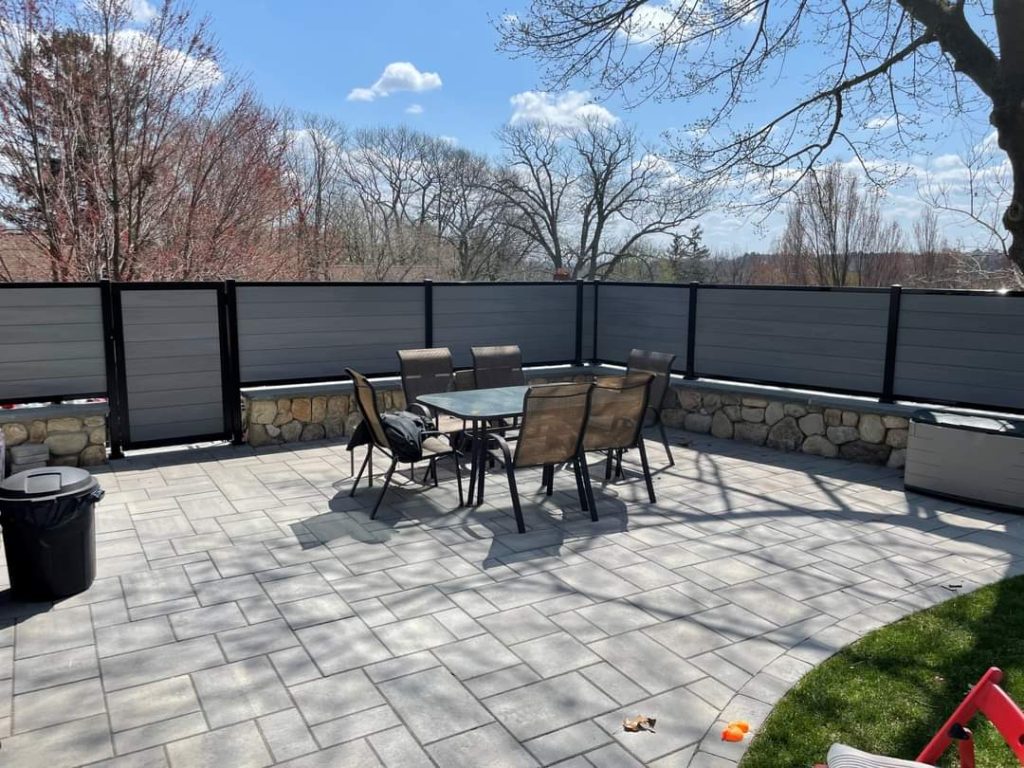
Top Benefits of Using Composite Fencing for Concrete Posts
Beyond design variety, composite fencing for concrete posts offers a wide range of practical and performance advantages that make it stand out from other fencing materials. Let’s take a closer look at the benefits that matter most to installers and property owners.
3.1. Outstanding Durability and Weather Resistance
Unlike timber that absorbs moisture and metal that can rust, composite fence panels remain unaffected by rain, snow, and UV exposure. When paired with concrete posts, they form a structure that withstands decades of harsh weather without major deterioration.
This combination resists:
Warping or swelling due to moisture
Splitting or cracking under sunlight
Rusting or corrosion of supports
Concrete posts anchor the fencing firmly even in strong winds, ensuring structural safety and long service life.
3.2. Minimal Maintenance Requirements
One of the main attractions of composite fencing with concrete posts is how little effort it requires over the years. There’s no need for annual staining, sealing, or painting.
Simple occasional cleaning with soap and water keeps the panels looking fresh. Concrete posts never rot or decay, meaning the fence remains stable for decades with minimal upkeep—an advantage that saves both time and cost.
3.3. Enhanced Security and Strength
Concrete posts add impressive structural integrity to any fencing system. When combined with dense composite fence panels, the result is a robust barrier that resists impact and prevents unauthorized access.
For homeowners who prioritize security but don’t want to sacrifice appearance, this setup offers the ideal balance between strength and elegance.
3.4. Superior Aesthetic Appeal
Modern composite panels are available in a range of colors, finishes, and wood-grain textures. They can easily mimic timber or provide a sleek, modern look depending on the setting.
Whether paired with plain gray concrete posts or colored variants, the resulting fence adds style and sophistication to gardens, courtyards, or driveways. Some homeowners even paint or stain the concrete posts to match their home’s palette, achieving a cohesive outdoor theme.
3.5. Long-Term Cost Efficiency
Although composite fence panels for concrete posts may require a slightly higher initial investment than traditional timber fences, the long-term cost savings are significant.
Factors contributing to cost efficiency include:
No repainting or treatment expenses
Fewer repairs or replacements
Extended lifespan reducing future replacement costs
In most cases, the total cost of ownership over 15–20 years is considerably lower than that of wood or metal fences.
3.6. Eco-Friendly and Sustainable Choice
Many manufacturers produce composite boards from recycled wood fibers and plastics, making this fencing system an environmentally responsible option. When paired with concrete posts—made from naturally abundant materials—the result is a fence with minimal ecological impact.
Furthermore, its durability means fewer resources are consumed over time for repairs or replacements.
3.7. Customization and Design Flexibility
From full privacy fences to decorative partitions, composite fencing for concrete posts offers outstanding customization potential.
Design variations include:
Vertical or horizontal panel orientation
Different color combinations
Decorative top trims or post caps
Mixed materials (such as integrating metal inserts)
Whether the goal is a bold modern look or a subtle natural boundary, the flexibility of composite materials makes it easy to achieve.
3.8. Fire and Insect Resistance
Unlike wood fencing, composite panels don’t attract termites, nor do they provide fuel for fire. Concrete posts further enhance this resistance, making the fence an ideal choice for regions prone to wildfires or termite infestations.
This dual protection ensures safety, longevity, and peace of mind.

Ideal Applications of Composite Fencing for Concrete Posts
The strength, design versatility, and low maintenance requirements make this fencing combination suitable for a broad range of projects.
Common applications include:
Residential garden boundaries
Commercial and industrial perimeters
School and park enclosures
Acoustic barriers near highways
Pool or patio privacy screening
Because of its modular nature, composite fence panels concrete posts systems are easy to install on both flat and uneven terrains, ensuring reliable performance across diverse environments.
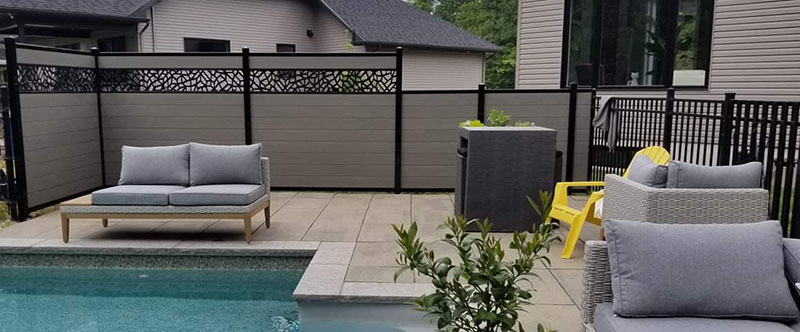
Installation and Long-Term Performance Tips
To maximize the lifespan and appearance of composite fencing for concrete posts, consider these practical recommendations:
Use high-quality slotted posts with reinforced steel for maximum stability.
Ensure proper drainage at the fence base to prevent water pooling.
Use compatible fixings if adding decorative or metal components.
Avoid direct ground contact with composite panels—use gravel boards when necessary.
Clean annually with a mild detergent and water to remove dirt buildup.
Following these steps ensures that your fence maintains its structural and visual integrity for many years.
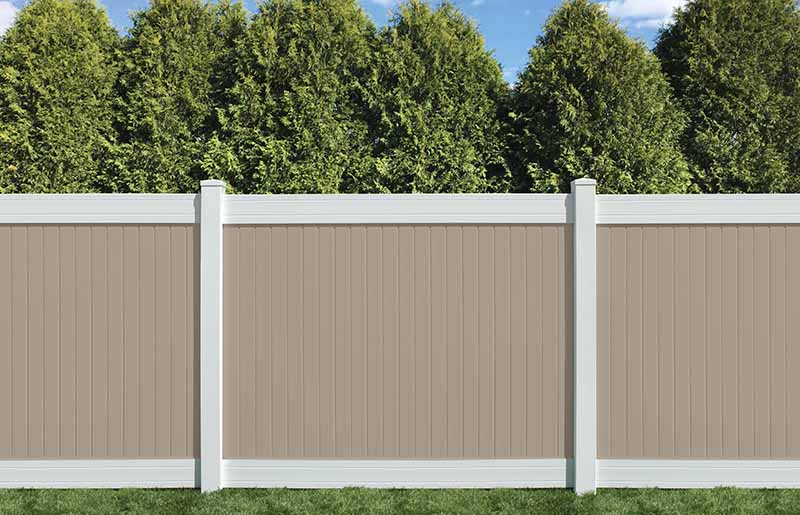
The Future of Composite Fencing with Concrete Posts
As sustainability and low-maintenance living continue to dominate modern construction trends, the popularity of composite fencing for concrete posts will only grow.
Future developments in materials technology are likely to introduce:
Lighter but stronger composite boards
More natural textures
Integrated lighting or decorative options
Color-stable surfaces with UV-resistant coatings
For homeowners and builders alike, investing in this fencing system represents not only a practical choice but also a design-forward and eco-conscious one.
Conclusion
The combination of composite fence panels and concrete posts delivers a fencing solution that checks every box: durability, elegance, minimal upkeep, and environmental sustainability.
Whether you prefer the clean lines of slotted post systems, the decorative charm of modern panel designs, or the strength of acoustic barriers, composite fencing for concrete posts provides long-lasting value and timeless appeal.
As outdoor spaces become more integral to home design, this fencing solution offers both protection and beauty—making it a smart investment for today’s property owners. If you want to get more about these composite fence, welcome to contact Hosung!

